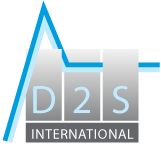Design Improvement and Optimisation
Product design and development requires that engineers consider trade-offs between product attributes in the areas of cost, weight, manufacturability, quality, and performance. The “optimum” design is in fact usually one in which compromises are acceptable, but understanding the impact of design decisions on all relevant attributes is tremendously difficult. Engineers are faced with the difficult challenge of determining how to arrive at the best overall design, making the right compromises, and not sacrificing in critical attributes like safety.
Hexagon’s (MSC Software) solutions for Design Improvement and Optimization include capabilities for shape, size and topology optimization for mechanical parts and systems. These capabilities are integrated with our core FE solver MD Nastran, and also include capabilities to simultaneously optimize for differing requirements and disciplines (Multi Discipline Optimization -MDO).
Hexagon (MSC Software) also provides standalone tools for multi-run design improvement studies which can be used to assess design sensitivity to product and environment variability, discover unknown design variable interactions, and provide a global view of the overall design space. These tools, including MSC Insight, work with most MSC CAE tools including MSC Nastran, Patran, Adams, Marc, EASY5 and more.
Finally, Hexagon (MSC Software) provides unique capabilities for the management of the process for design improvement and all of the associated CAE results and design iterations that are generated. SimManager provides a framework for design optimization and simulation process management that integrates with any commercial or in-house tools, and can also work with 3rd party optimization and design improvement packages to help with large scale assessments of a complex design space.
Optimization
Hexagon (MSC Software) provides proven solutions for component and system design optimization. Based on MD Nastran’s gradient based optimization technique, the solutions can be broadly classified into three categories – namely, sizing, shape and topology optimization, depending on the methods employed in achieving the ideal design. By starting at a pre-specified point and searching the design space, a local optimal solution that satisfies the various constraints on the structural behavior is obtained, and it is also possible to include things like advanced material properties for composites as variables in an optimization. Hexagon (MSC Software) also offers some advanced forms of shape and size optimization called topography and topometry, respectively, to give very accurate control of material thickness and geometry as design variables. And, with response functions and constraints supported across multiple disciplines, users do not have to run multiple optimization runs for each discipline. It is possible to combine all these disciplines into a single run, users gain efficiency and obtain better designs.
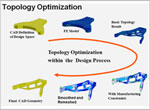
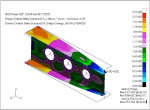
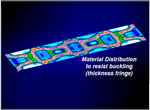
Multi-run and Design Space Exploration
It is often desirable to develop a “best” design not an optimal design; something that is a good trade-off of multiple requirements and robust. This is where techniques like Design of Experiment (DOE) or Monte-Carlo (Stochastics) can be useful. Hexagon (MSC Software) offers tools that allow users to setup multi-run CAE experiments based on multiple simulation models and even different disciplines; they can even include discrete design variables. A Response Surface Method (RSM) is used on the results from the experiment to create an approximate model, which represents how the design will behave over a large operating space. Once these models have been generated it becomes very easy and fast to perform “what if” and design trade-off studies.
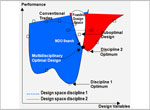
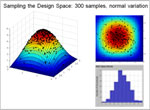
Optimization and Design Improvement Process Integration and Management
Optimization and Design Improvement studies can often be complex; requiring integration with third party specialty applications that may provide advanced capabilities for handling things like multiple design concepts or other specialty optimization and design improvement techniques. These types of studies also generate lots simulation data and results associated with hundreds or even thousands of design variables and simulation models, which need to be tracked and managed.
Hexagon (MSC Software) offers solutions that work well with other applications, providing capabilities that can play a small piece of the process or that can integrate and manage the entire process, as determined by the particular needs of the customer. Also, Hexagon’s (MSC Software) simulation content and process management solutions are uniquely suited for keeping track of and managing the entire simulation process, ensuring that no relevant data is lost and critical design configurations are readily identifiable.


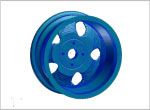
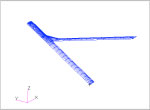
-
Aerospace & Defense: Wing and fuselage structures, Landing gears, Helicopter blade design, Doors, Satellite solar panels
-
Automotive: Vehicle and component weight reduction, Vibration modes separation, Maximized energy absorption for crash safety, Optimized bushing rates for multiple handling maneuvers and ride profiles, Suspension design optimization
-
Consumer Products: Sporting goods, Packaging, Bicycle frames
-
Energy: Wind turbine blades, Offshore structures like thick-walled tubular, subsea pipes, tanks
-
Government / Civil: Concrete structures, Bridges, Barriers
-
Medical: Stents, Hospital equipment (e.g. bed, wheel chairs), Surgical devices
Request information
D2S International offers consultancy services using finite element software from HEXAGON (MSC Software).
